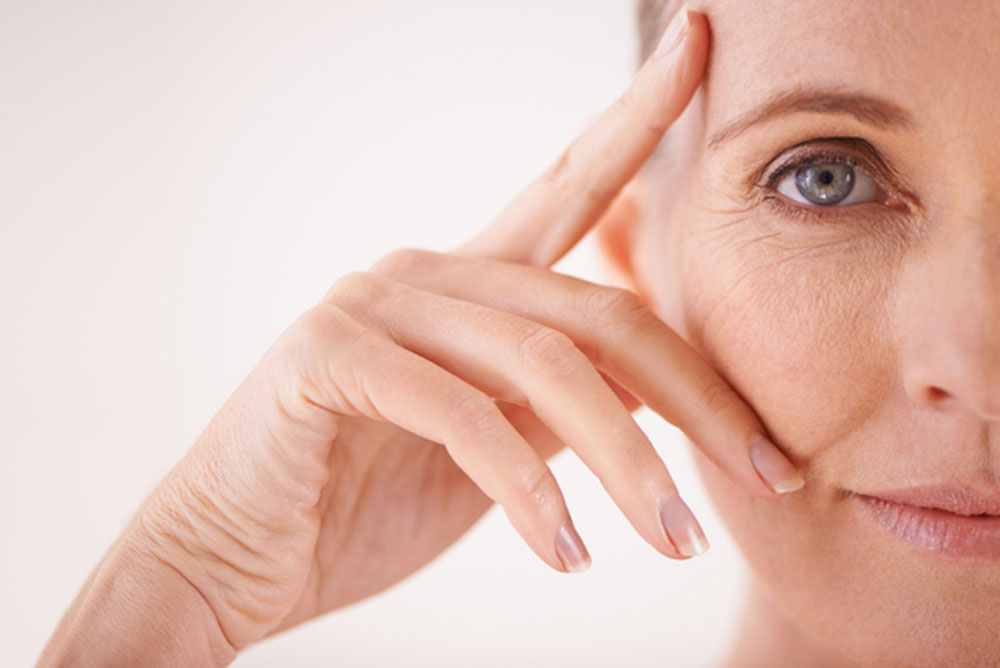
iStock
By Mary Carpenter
To ring in 2022, Mary begins a new My Little Bird Well-Being series: Answers to Readers’ Questions. The first one prompts an update on her February, 2015, post—To Detox: Some Like It Hot.
QUESTION: Can infrared saunas help protect the eyes against inherited macular degeneration?
Saunas that show some promise for protecting or rejuvenating the eyes employ “near-infrared” (NIR) or red light—on the shorter end of the infrared range, as opposed to far infrared (FIR) saunas. (Infrared or “dry” saunas heat the surrounding air up to around 130 degrees, while traditional Finnish “wet” saunas heat air to from 180 to 200 degrees F and create more intense sweating.)
Near-IR light (around 700 nm) promoted neuronal viability in mice as “an innovative and novel therapeutic approach for the treatment of retinal diseases, including age-related macular degeneration, glaucoma, diabetic retinopathy,” according to cell biologist J.T. Eells and colleagues at the Medical College of Wisconsin. But since this 2003 research, the use of NIR light for eye health has focused not on retinal diseases but on general rejuvenation of retinal function affected by aging.
Photobiomodulation therapy (PBMT) using NIR light has the potential for widespread anti-aging effects on the eyes, according to a 2021 report by researchers in Miami and Kunming, China. But the report makes clear that the “potential to be a ‘miracle medicine’ to cure many diseases” depends on future development of NIR light devices and well-designed research.
Published in the Journal of Gerontology, a small study on 24 adults, ages 28-72, using small hand-held flashlights that emitted NIR light—for three minutes a day over two weeks—found a “dramatic rejuvenating effect on vision.” While all study participants experienced a 14% improvement in the ability to distinguish low-contrast colors, those over 40 had more significant—20% improvement—as well as improved vision under low light.
Longer length, FIR frequency light, on the other hand, (with wavelengths longer than 3,000 nm) promises deeper penetration into the body—compared to both NIR and traditional saunas–causing greater dilation of blood vessels and capillaries. This increased vasodilation can help treat heart conditions, increase metabolism to help with weight loss, reduce inflammation throughout the body, and expel toxins—with a range of causes from infection to stress—from the cells.
(Advocates of FIR light therapy use since-debunked reports to charge that near-infrared light causes so-called “glassblower’s cataracts,” seen in iron, steel and glass workers; they contend that shorter infrared wavelengths [below about 1000 nm] are associated with greater ocular damage. But researchers in the late 1990s found no connection.)
Infrared saunas, called “Waon therapy,” are popular in Japan. They’re used mostly to treat chronic heart failure, but have recently been found to help with chronic fatigue syndrome. “Heat stress” from all saunas—infrared as well as Finnish-style—“causes significant sweating that is likely to lead to…beneficial cardiovascular and metabolic effects,” according to a widescale review by Melbourne biomedical researchers—although they found “insufficient evidence to recommend specific types of sauna bathing for specific clinical conditions.”
Finally, there is the ozone sauna—using entirely different Hyperthermic Ozone and Carbonic Acid Transdermal Technology (HOCATT)—that, according to HOCATT clinic owner Georgia optometrist David Grosswald, can create new cells in the macular, with the possibility of making new cells in the brain and elsewhere in the body, which he calls “macular regeneration.” Reports of health benefits from the HOCATT ozone sauna appear to come solely from clinics offering the therapy.
As reported in my 2015 post, for “detox” from Lyme disease suffered six years earlier, I tried infrared sauna based on recommendations from a physical therapist/personal trainer—based on the theory that infrared light kills off endotoxins released by Lyme-causing spirochetes, which can remain in the body after antibiotics kill off the bugs themselves. Supporters assert that sweat produced in infrared saunas, compared to sweating as a result of exercise, contains a higher percentage of toxins and works better to evacuate body toxins and metabolic waste.
The “most far-reaching assertions for this [infrared sauna] technology center on detoxification,” according to Scientific American. But, pointing out that “the most efficient system” for detox is the kidneys, liver, GI tract and the immune system, USC pharmaceutical sciences professor Roger Clemens said: “Except when one of the major organs breaks down, there isn’t a medical device…that can accelerate the body’s natural process of detoxification.”
My main impression: very hot! I was unable to go much above 125 degrees F without opening the door and fanning in cooler air. But the main drawback was trying to get comfortable for 45 minutes on a hard seat too short for lying down—and, compared to traditional saunas, I also sweated less and thus felt less “cleansed.”
I had a more comfortable, pleasantly warming experience of infrared therapy lying on a Biomat —a body-length pad that produces infrared light via amethyst crystals—during a physical therapy session. Biomats are for sale to consumers, with most body-length options costing more than $700.
As with most well-being therapy options I tried, including acupuncture, myofascial release therapy and flotation therapy, health benefits require more than one shot. For detoxing from infrared saunas, the recommendation is one or two a week in four-to-15-minute sessions—to avoid mobilizing too many toxins at once. But for any health complaint that is challenging for traditional MDs to diagnose or treat, these therapies can be the best, often the only, resort.
—Mary Carpenter regularly reports on topical issues in health and medicine.
